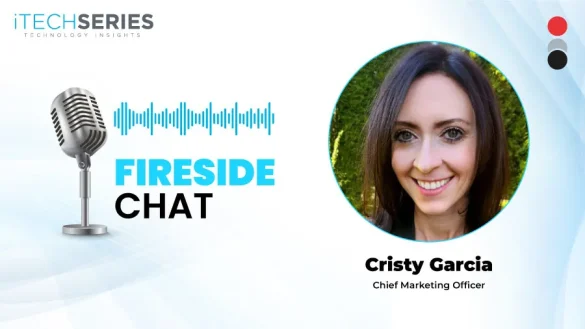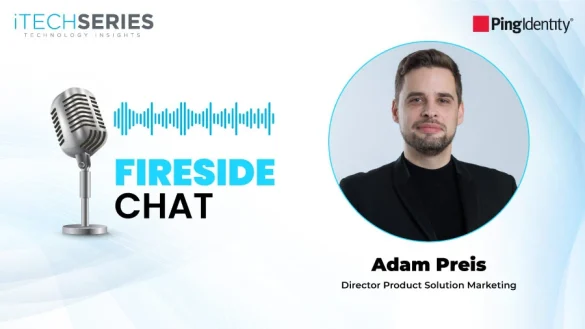Tuneer Malik, Head of APAC Marketing at Glean, brings deep expertise in integrated marketing, field strategy, and multi-region execution across APAC, MEA, and ANZ. In this conversation, he shares insights on evolving MQL-focused strategies, aligning marketing with revenue goals, driving ROI through field events, leveraging AI, and navigating regional marketing complexities.
Tuneer, it’s a pleasure to have you on this interview series. Could you walk us through your marketing journey?
I spent my initial marketing years at Cvent being groomed under multiple mentors who had done it all at various organizations—big and small—and had multiple decades of experience, the know-how, and, most importantly, the knowledge of things that work from a target ICP PoV and things to be careful of (the pitfalls). Cvent was my first organization that gave me that platform to learn (~set up a strong base), excel, and go hands-on with each campaign, helping me understand the intricacies of each channel/each tactic and how everything comes together. I’ve sat at the desks of several POCs, chewing my brain just to understand what they do and how they do it—as I learned from them (campaign ops, digital marketing, web design, market research, etc.), I added my two cents on how we could make things better. All of this, in turn, helped me lead ASEAN at Freshworks and APAC MEA ANZ at GEP, and I continue as the head of marketing for APJ at Glean. The other most important lesson I learned as a marketer is 80 is the new 100, i.e., I (now) do not wait to achieve absolute perfection before going live with a campaign or plan way too much—if I feel I have all basic things covered from a branding and demand generation standpoint, I launch and refine as I go.
How has the role of field marketing evolved within an integrated revenue organization structure?
From what used to simply be a marketing team’s job to generate as many leads as possible, as fast as possible, and to sometimes focus on quality, i.e., MQLs, SQLs, and MQL to SQL conversion percentage by channel. This has now changed into pipeline goals. A bottom-up calculation tells us how much pipeline we need to generate per quarter, per year, as marketing, for the sales team to meet their regional revenue goals, which are then tied back to the org. FY revenue goals.
What are the key challenges in executing integrated marketing strategies across multiple regions?
The regions I operate in can be drastically different from a cultural sensitivities perspective, how they buy—their decision-making structure, market maturity, i.e., what may work in Australia may not exactly work in Singapore vs. Japan, which will lead to change in the type of content being presented to them and types of activities being done in-region. The vendor’s/PR agencies/organizers we might work with in one country may not have a presence at all in the other. This can also be the case with channels/platforms, too, being different by region/by country. Language (localization) becomes a challenge too in markets like Japan, which are much more comfortable with content being delivered in Japanese, which is additional in terms of money spent, resource allocation, etc.
“The state of AI adoption shapes field marketing by influencing audience needs, content strategy, and campaign execution.”
How do you determine the most effective channels and events for your field marketing efforts?
To determine the most effective channels and events for field marketing, I start by defining clear goals/outcomes—whether that’s lead generation and/or brand awareness. I’ve also used data from past campaigns to identify which type of events and channels have generally driven meaningful results, and test a mix of formats such as trade shows, pop-ups, or partner events to see what resonates best, whilst ensuring that the event aligns with our brand. Post-event, we closely track performance through metrics such as MQL to SQL conversion rates and overall ROI. A key benchmark for success is achieving an 18x return, meaning for every dollar spent, the activity must generate at least $18 in pipeline value.
How does the state of AI adoption influence your field marketing focus?
The state of AI adoption shapes field marketing by influencing audience needs, content strategy, and campaign execution. In markets with high AI adoption, marketers focus on personalization and industry/persona use cases for decision-makers, often collaborating with ecosystem partners. In less mature markets, efforts shift toward education, thought leadership, and hands-on labs/workshops for D2D users. I use AI on a daily basis, whether that’s Glean—my company’s own product of internal knowledge—at least a dozen times, and scour through for iterations via other AI tools as well. The idea is to constantly/consistently improve and adapt.
What metrics do you rely on to measure field marketing success, and how do they influence your strategy?
- Pipeline Influence and Contribution Influenced Pipeline: Value of opportunities that are engaged with your field programs.
- Event and Program ROI = (Revenue Attributed – Program Cost) / Program Cost: Ensures budget allocation is optimized toward high-return activities.
- Lead Quality and Conversion Rates: MQL to SQL and SQL to opportunity conversion rates.
- Sales Feedback and Participation: Sales satisfaction, follow-up compliance, and direct feedback. This supports better alignment between marketing and sales and guides future program design. I usually do an on-the-spot A/B/C ranking of an activity—A: Great to do again, B: Good to go again/could be replaced with something else, C: not to repeat this FY or while planning for the next FY.
As a go-to-market leader, how do you ensure that your teams are completely aligned and in sync with the broader revenue goals?
To ensure go-to-market teams are aligned with broader revenue goals, it’s crucial to set clear, shared objectives and measurable KPIs across sales and marketing. Regular cross-functional meetings allow teams to discuss progress and adjust strategies when needed. Data-driven decision-making ensures that all teams are using the same insights to inform their actions, and clear communication channels help keep everyone updated on shifts in strategy. IMO, defining specific roles and responsibilities for each team member helps avoid overlaps and ensures smooth handoffs. A continuous feedback loop promotes continuous improvements, and this integrated approach ensures all GTM teams work together effectively toward a unified revenue target.
About Tuneer Malik
Tuneer is a seasoned marketing leader with over 10 years of experience and currently serves as Head of APAC Marketing (GTM) at Glean, where he drives growth and brand awareness across key regions. His expertise spans B2B marketing, ABM, and digital strategies. He has previously held leadership roles at GEP, Cvent (Singapore), and Freshworks, consistently delivering impactful marketing campaigns.











